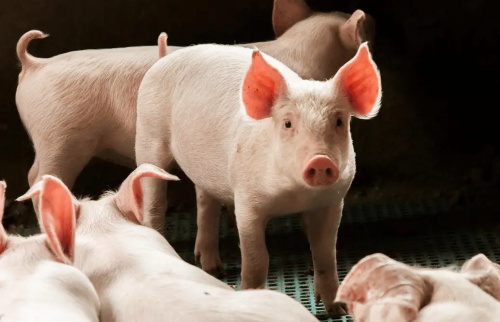In the ever-evolving world of animal husbandry and veterinary medicine, technology has played a crucial role in improving health outcomes for livestock and companion animals alike. One of the most transformative innovations in recent years is the veterinary sonography machine, also commonly referred to as the veterinary ultrasound machine. These devices are not just enhancing the capabilities of veterinarians; they are revolutionizing the way farmers, breeders, and animal health specialists approach diagnosis, treatment, and herd management.

The Rise of Veterinary Ultrasound in Animal Care
Ultrasound technology, which uses high-frequency sound waves to create detailed images of internal organs and tissues, was initially developed for human medicine. อย่างไรก็ตาม, its adaptation to veterinary care has opened up an entirely new dimension of possibilities. Unlike traditional diagnostic tools such as X-rays, sonography provides real-time imaging without exposing animals to radiation, making it safer for both the animals and the operators.
For livestock such as cattle, สุกร, แกะ, ม้า, and even camels, อัลตราซาวนด์สัตวแพทย์ machines are becoming an indispensable tool. Whether it’s checking pregnancies, diagnosing internal injuries, or monitoring organ health, sonography offers a non-invasive, immediate, and highly informative glimpse inside the body.
Key Applications in Livestock Management
1. Reproductive Management:
Perhaps the most widespread use of veterinary sonography in livestock farming is in reproductive management. Early pregnancy detection in cows, sows, mares, ewes, and camels allows farmers to optimize breeding programs, make informed culling decisions, and manage resources more efficiently. With portable ultrasound devices, veterinarians can perform on-farm checks, ensuring minimal stress to the animals and faster turnaround times for crucial decisions.
2. Monitoring Fetal Development:
Beyond simply confirming pregnancy, ultrasound imaging provides insights into fetal viability, growth rates, and possible complications such as twin pregnancies or developmental abnormalities. In species like horses and camels, where breeding can be both financially and genetically significant, fetal monitoring is a cornerstone of responsible herd management.
3. Diagnosing Internal Conditions:
Sonography helps identify gastrointestinal issues, organ enlargements, tumors, abscesses, or fluid accumulations that might otherwise go undetected until it’s too late. Quick diagnosis can lead to prompt treatment, potentially saving the animal’s life and minimizing financial losses for farmers.
4. Musculoskeletal Evaluations:
In performance animals like racehorses, working camels, or show livestock, musculoskeletal sonography is critical for diagnosing tendon injuries, muscle tears, and joint problems. Early detection ensures appropriate therapy and rehabilitation strategies, improving long-term outcomes.

Advantages Over Traditional Diagnostic Methods
One of the most notable advantages of veterinary sonography is its safety profile. Unlike radiography, there is no ionizing radiation involved, meaning repeated scans are safe for pregnant animals, young livestock, and veterinarians alike.
Furthermore, the portability of modern ultrasound units cannot be overstated. Many devices are now handheld or backpack-sized, with battery-operated models available, making them ideal for use in remote or rugged farm environments where traditional veterinary clinics are not accessible.
นอกจากนี้, the learning curve for basic ultrasound applications has decreased thanks to improved machine interfaces and training programs. Many farmers and herdsmen are now capable of performing preliminary scans themselves under veterinary guidance, further streamlining animal care workflows.
Innovations Driving the Field Forward
Technological advancements continue to push veterinary sonography into new frontiers. Key innovations include:
-
Elastography:
This advanced form of ultrasound measures tissue stiffness, aiding in the early detection of fibrosis, tumors, and musculoskeletal injuries. -
Telemedicine Integration:
Some ultrasound systems now feature wireless transmission, enabling real-time consultation with specialists no matter how remote the farm may be. This reduces the need for costly and time-consuming animal transport. -
Species-Specific Probes:
Specialized probes designed for different body sizes and anatomical features (such as bovine, equine, porcine, ovine, and camelid species) enhance diagnostic accuracy and ease of use.
Challenges and Considerations
While veterinary sonography offers tremendous benefits, there are challenges to consider.
The initial cost of high-quality machines can be substantial, though the return on investment is typically realized through better herd health and reproductive success. นอกจากนี้, correct interpretation of ultrasound images requires proper training and experience, especially for complex cases.
Finally, not every health issue is detectable by ultrasound alone; it remains one of many tools in the broader diagnostic arsenal.

The Future of Veterinary Imaging in Agriculture
Looking ahead, the role of sonography in livestock management and veterinary care will only grow. As machines become more affordable, user-friendly, and precise, adoption rates are expected to rise even among small-scale farmers.
Integration with artificial intelligence (AI) is on the horizon, with some systems already capable of automatically identifying structures like fetuses or cysts, reducing reliance on operator experience.
Ultimately, veterinary sonography is not just a technological trend — it represents a paradigm shift toward more humane, efficient, and data-driven animal care. Whether managing a herd of โคนม, raising premium horses, breeding elite camels, or ensuring the health of meat pigs and sheep, ultrasound machines are becoming as essential as feed and water.